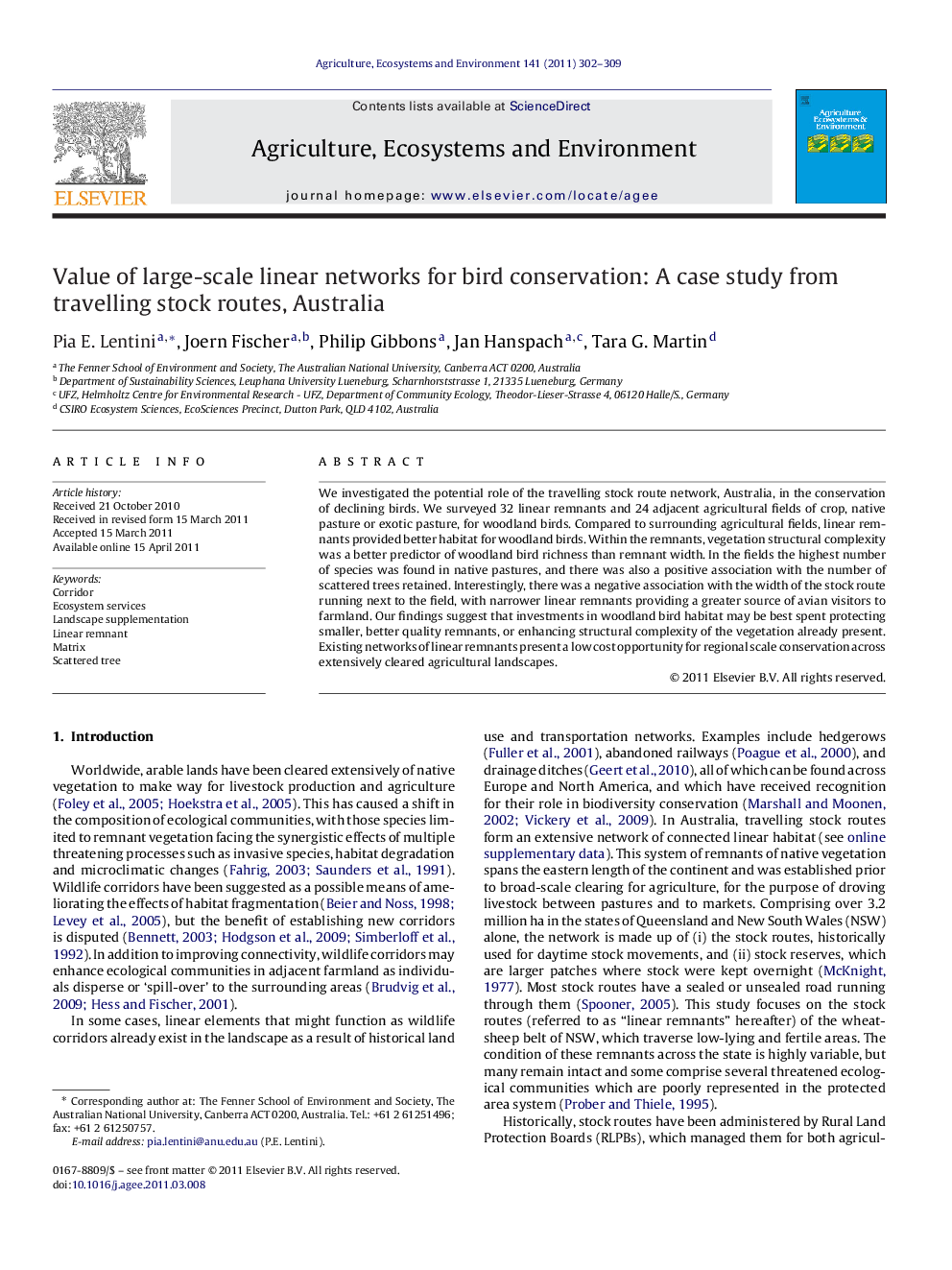| Article ID | Journal | Published Year | Pages | File Type |
|---|---|---|---|---|
| 2414823 | Agriculture, Ecosystems & Environment | 2011 | 8 Pages |
We investigated the potential role of the travelling stock route network, Australia, in the conservation of declining birds. We surveyed 32 linear remnants and 24 adjacent agricultural fields of crop, native pasture or exotic pasture, for woodland birds. Compared to surrounding agricultural fields, linear remnants provided better habitat for woodland birds. Within the remnants, vegetation structural complexity was a better predictor of woodland bird richness than remnant width. In the fields the highest number of species was found in native pastures, and there was also a positive association with the number of scattered trees retained. Interestingly, there was a negative association with the width of the stock route running next to the field, with narrower linear remnants providing a greater source of avian visitors to farmland. Our findings suggest that investments in woodland bird habitat may be best spent protecting smaller, better quality remnants, or enhancing structural complexity of the vegetation already present. Existing networks of linear remnants present a low cost opportunity for regional scale conservation across extensively cleared agricultural landscapes.
► More woodland bird species are found in farmland situated next to narrower remnants. ► Woodland bird species richness was higher in native pastures compared to crops or exotic pastures, and especially those with retained scattered trees. ► Vegetation structural complexity was a better predictor of woodland bird richness than remnant width.
